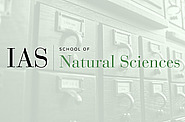Joint IAS Princeton University Astrophysics Colloquium
Feb
07
2017
Institute for Advanced Study/Princeton University Joint Astrophysics Colloquium
The Surprisingly Complex Lives of Massive Galaxies
Rachel Bezanson
11:00am
Dec
13
2016
Institute for Advanced Study/Princeton University Joint Astrophysics Colloquium
Dark Matter Substructure: Cosmological Treasure Trove or a Pandora's Box?
Frank van den Bosch
11:00am|Bloomberg Hall Lecture Hall
Dec
06
2016
Institute for Advanced Study/Princeton University Joint Astrophysics Colloquium
Controlling Star Formation, from Clouds to Galaxies
Eve C. Ostriker
11:00am|Bloomberg Hall Lecture Hall
Nov
29
2016
Institute for Advanced Study/Princeton University Joint Astrophysics Colloquium
The First High-resolution X-ray Spectrum of a Galaxy Cluster
Maxim Markevitch
11:00am|Bloomberg Hall Lecture Hall
Nov
22
2016
Institute for Advanced Study/Princeton University Joint Astrophysics Colloquium
Extraordinary Physics with Millisecond Pulsars
Scott Ransom
11:00am|Bloomberg Hall Lecture Hall
Nov
15
2016
Institute for Advanced Study/Princeton University Joint Astrophysics Colloquium
Seeking Clues to Explain the Diverse Architectures of Exoplanetary Systems
Heather Knutson
11:00am|Bloomberg Hall Lecture Hall
Nov
08
2016
Institute for Advanced Study/Princeton University Joint Astrophysics Colloquium
The Future in Discovery and the Discovery in the Future
Szabolcs Marka
11:00am|Bloomberg Hall Lecture Hall
Nov
01
2016
Institute for Advanced Study/Princeton University Joint Astrophysics Colloquium
Chemistry of Protoplanetary Disks and Nascent Planets
Karin Öberg
11:00am|Bloomberg Hall Lecture Hall
Oct
25
2016
Institute for Advanced Study/Princeton University Joint Astrophysics Colloquium
The Thermal Odyssey of the Photoionized Intergalactic Medium
11:00am|Bloomberg Hall Lecture Hall
Oct
18
2016
Institute for Advanced Study/Princeton University Joint Astrophysics Colloquium
The Polarized Microwave Background: ACTPol and beyond
11:00am|Bloomberg Hall Lecture Hall
